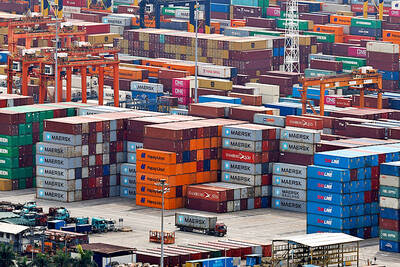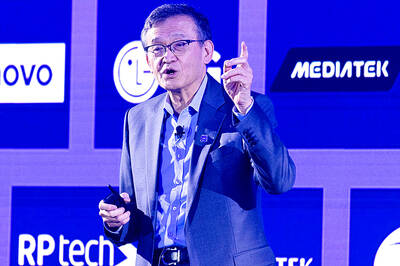China's top dotcoms believe multimedia messaging services (MMS) will become a gold mine sustaining their profit growth, and have earmarked large sums for aggressive development, state Chinese media said yesterday.
Sohu.com Inc (搜狐), one of China's three large NADAQ-listed portals, plans "huge investment" this year in a bid to outpace its two major rivals, Sina.com and Netease.com, in tapping the market, Xinhua news agency said.
"The peak season for short text messages is over," Sohu's CEO Charles Zhang (
Unlike short messaging services (SMS), which allow transmissions of written text only, MMS enables users to send color pictures, animation, recorded sound and video.
At the end of last year, 8 million Chinese residents subscribed to MMS, and experts believe MMS for mobile subscribers will expand to an industry worth US$22 billion by 2008, according to Xinhua.
Sina.com Corp (
"Compared with Sina's 18 million SMS subscribers, the number of ... MMS users is still very small," said Sina's CEO Wang Yan (
"Hundreds of billions of short multimedia messages will have been sent by 2005, which will have generated a revenue no less than that of SMS."
The future of the industry hinges on how fast the government sets up the needed infrastructure.
China has been pushing the development of the third-generation technology, which allows transmission of voice, data and video, and high speed wireless Internet access 40 times faster than second-generation systems, Xinhua said.
"The rising MMS business ushers in a new wireless Internet era," said an industry expert. "It doesn't simply mean a reordering of Internet portals. It will redefine the market."

The Eurovision Song Contest has seen a surge in punter interest at the bookmakers, becoming a major betting event, experts said ahead of last night’s giant glamfest in Basel. “Eurovision has quietly become one of the biggest betting events of the year,” said Tomi Huttunen, senior manager of the Online Computer Finland (OCS) betting and casino platform. Betting sites have long been used to gauge which way voters might be leaning ahead of the world’s biggest televised live music event. However, bookmakers highlight a huge increase in engagement in recent years — and this year in particular. “We’ve already passed 2023’s total activity and

Nvidia Corp CEO Jensen Huang (黃仁勳) today announced that his company has selected "Beitou Shilin" in Taipei for its new Taiwan office, called Nvidia Constellation, putting an end to months of speculation. Industry sources have said that the tech giant has been eyeing the Beitou Shilin Science Park as the site of its new overseas headquarters, and speculated that the new headquarters would be built on two plots of land designated as "T17" and "T18," which span 3.89 hectares in the park. "I think it's time for us to reveal one of the largest products we've ever built," Huang said near the

China yesterday announced anti-dumping duties as high as 74.9 percent on imports of polyoxymethylene (POM) copolymers, a type of engineering plastic, from Taiwan, the US, the EU and Japan. The Chinese Ministry of Commerce’s findings conclude a probe launched in May last year, shortly after the US sharply increased tariffs on Chinese electric vehicles, computer chips and other imports. POM copolymers can partially replace metals such as copper and zinc, and have various applications, including in auto parts, electronics and medical equipment, the Chinese ministry has said. In January, it said initial investigations had determined that dumping was taking place, and implemented preliminary

Intel Corp yesterday reinforced its determination to strengthen its partnerships with Taiwan’s ecosystem partners including original-electronic-manufacturing (OEM) companies such as Hon Hai Precision Industry Co (鴻海精密) and chipmaker United Microelectronics Corp (UMC, 聯電). “Tonight marks a new beginning. We renew our new partnership with Taiwan ecosystem,” Intel new chief executive officer Tan Lip-bu (陳立武) said at a dinner with representatives from the company’s local partners, celebrating the 40th anniversary of the US chip giant’s presence in Taiwan. Tan took the reins at Intel six weeks ago aiming to reform the chipmaker and revive its past glory. This is the first time Tan